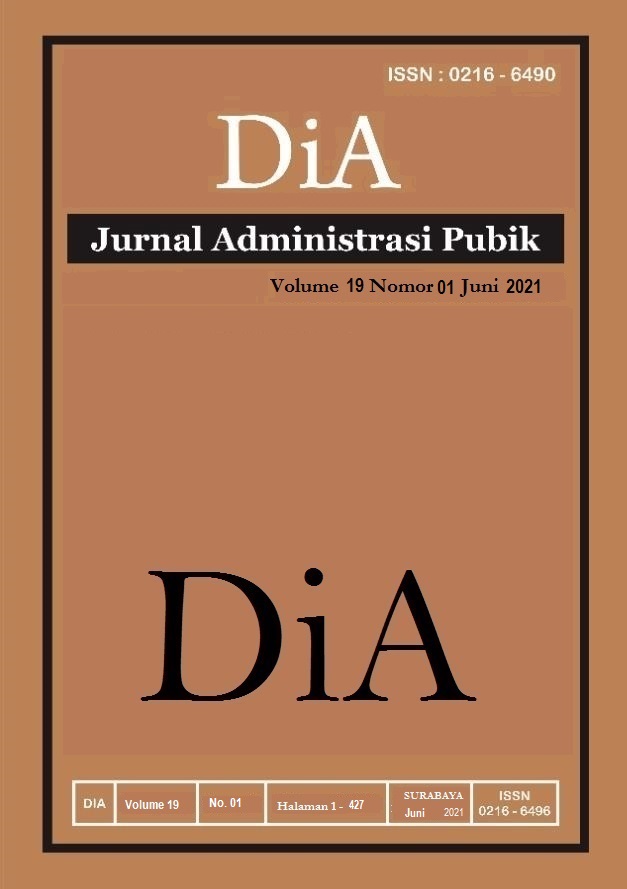EU INTEGRATION POLICY: QUALIFIED MAJORITY VOTING (QMV) AND SUPRANATIONALITY COUNCIL OF MINISTERS
DOI:
https://doi.org/10.30996/dia.v19i1.5251Keywords:
Qualified Majority Voting (QMV), Supranational, European Union Integration, Council of MinistersAbstract
The European Union integration undergoes various long dynamic processes. Based on the views of academics, integration is defined as an effort to hand over all state functions to supranational organizations. The use of Qualified Majority Voting (QMV) is considered as an attempt to make the Council of Ministers a supranational institution. With the existence of QMV, member countries can no longer freely reject policies that are very likely to be carried out in the unanimous mechanism that has been implemented previously. After the implementation of the 2009 Lisbon Treaty, policymaking in the Council of Ministers will use the double majority mechanism which came into force on November 1, 2014. Basically, the double majority is an extension of the QMV mechanism by adding certain criteria in determining the majority of votes. There are three criteria that must be met in the double majority mechanism such as population criteria, supporting member countries criteria, and blocking criteria. The implication is that a country will find it difficult to unilaterally oppose the policies being discussed in the Council of Ministers. The reduced power of the state in the policy-making process indicates that the Council of Ministers continues to evolve towards a supranational institution. Based on these facts, the supranational of the Council of Ministers that develops through the use of the QMV mechanism will have a positive impact on the integration of the European Union as a whole.
Downloads
References
Christiansen, Thomas (2010). "The EU reform process: from the European Constitution to the Lisbon Treaty." Carbone, Maurizio. National Politics and European Integration From the Constitution to the Lisbon Treaty. Cheltenham: Edward Elgar Publishing Limited:16-33.
Dehousse (2011), Renaud, Olivier Costa and Aneta Trakalovà. "Co-decision and 'Early Agreements’: An Improvement or a Subversion of the Legislative Procedure?" Notre Europe, November 2011.
Deutsch, Karl W. (1953), Nationalism and Social Communication. Cambridge: MIT Press.
Deutsch, Karl W., et al (1957). Political Community and the North Atlantic Area. Princeton: Princeton University Press.
European Parliament (2012) "Guide to Codecision and Conciliation under the Treaty of Lisbon." European Parliament.
Haas, Ernst (1961). "International Integration: the European and the Universal Process." International Organization: 366-392.
The Uniting of Europe (1958) Political, Social and Economic Forces, 1950-1957. Stanford: Stanford University Press.
Hosli, Madeleine O (1995). "The Balance between Small and Large: Effects of a Double- Majority System on Voting Power in the European Union." International Studies Quarterly: 351-370.
Kurpas, Sebastian, et al (2007). "The Treaty of Lisbon: Implementing the Institutional Innovations." Joint Study.
Mayoral, Juan (2011). Democratic improvements in the European Union under the Lisbon Treaty: Institutional changes regarding democratic government in the EU. San Domenico di Fiesole: European Union Democracy Observatory (EUDO).
Miller, Vaughne (2004). "The Extension of Qualified Majority Voting from the Treaty of Rome to the European Constitution." Research Paper 04/54. 2004.
Mix, Derek E (2013). "The European Union: Foreign and Security Policy." CRS Report for Congress.
M.Nazir (1988). Research Methods: Penerbitan, Jakarta: Ghalia, Indonesia, 111.
Novak, Stephanie (2011). "Qualified Majority Voting from the Single European Act to the Present Day: an unexpected Permanence." Notre Europe, November 2011.
Nuget, N (1999). The Government and Politics of the European Union. London: Macmillan Press.
Rossi, Lucia Serena (2010). "A New Inter-institutional Balance: Supranational vs. Intergovernmental Method After the Lisbon Treaty." Global Jean Monnet- ECSA WORLD Conference The European Union after the Treaty of LisbonGlobal Jean Monnet- ECSA WORLD Conference The European Union after the Treaty of Lisbon. Brussels.
Sieberson, S. C (2010). "Inching Toward EU Supranationalism? Qualified Majority Voting and Unanimity Under the Treaty of Lisbon." Virginia Journal of International Law: 919-995.
Sweet, A. S. and H. Sandhlotz (1997). "European Integration and Supranational Governance." Journal of European Public Policy: 297-317.
The European Council and the Council (2010) Two Institutions Acting for Europe. Brochure. Brussels: General Secretariat of the Council.
Tsebelis, G. and G. Garrett (2001). "The Institutional Foundations of Intergovernmentalism and Supranationalism in the European Union." International Organization: 357-390.
Downloads
Published
How to Cite
Issue
Section
License
The DiA journal allows authors to retain the copyright of their papers without limitation. Authors may grant publishers non-exclusive publishing rights to publish articles. Granting first publishing rights to publishers also qualifies as unlimited copyright (because there are no restrictions imposed by publishers on author copyright).







